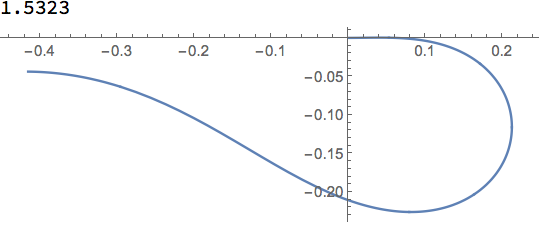I need a parametric plot of a curve whose components are defined by:$$\left(\int_0^x\cos(f(t))dt,\int_0^x\sin(f(t))dt\right)$$ where $f(t)$ is an InterpolatingFunction (obtained from NDSolve). The Code I show below works fine, but depending on $f(t)$ can take very long to produce the output. Any suggestion to make it faster?...I mean, I am almost sure that the problem does not belong to ParametricPlot but to the way I define the integral with the variable extremum.
s = NDSolve[{y'[x] == g[x], g'[x] == -60 (1 - x) Cos[y[x]], y[0] == 0,g[0]== 1.2}, {y, g}, {x, 0, 1}];
f[x_] = Evaluate[y[x] /. s];
intcos[x_Real] := NIntegrate[Cos[f[t]], {t, 0, x}];
intsin[x_Real] := NIntegrate[Sin[f[t]], {t, 0, x}];
ParametricPlot[{intcos[x], intsin[x]}, {x, 0, 1}]
Note The code does not produce an output in mathematica 11, but work fine in mathematica 10, but I am going to make another question about that.




f[t]? How can we test it? $\endgroup$